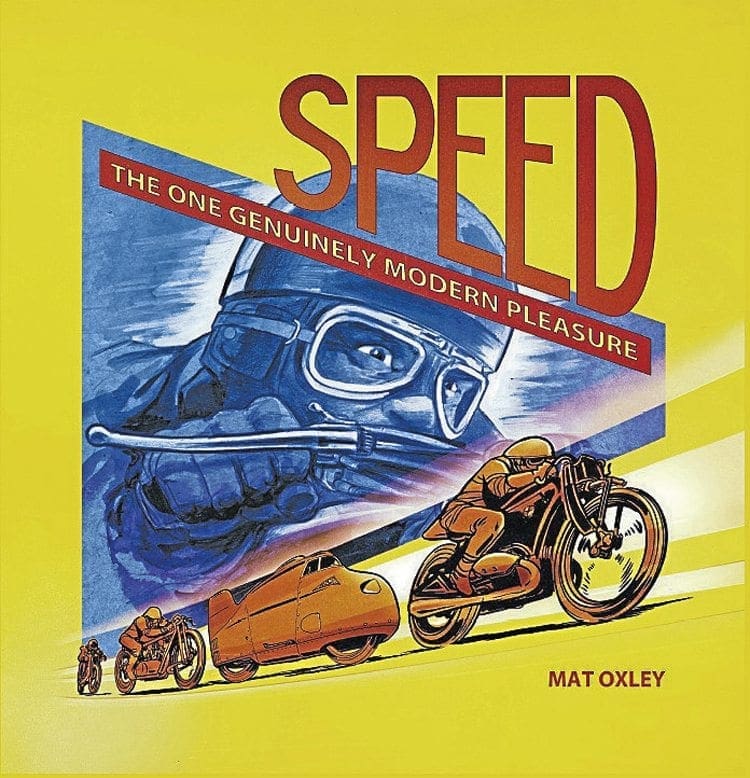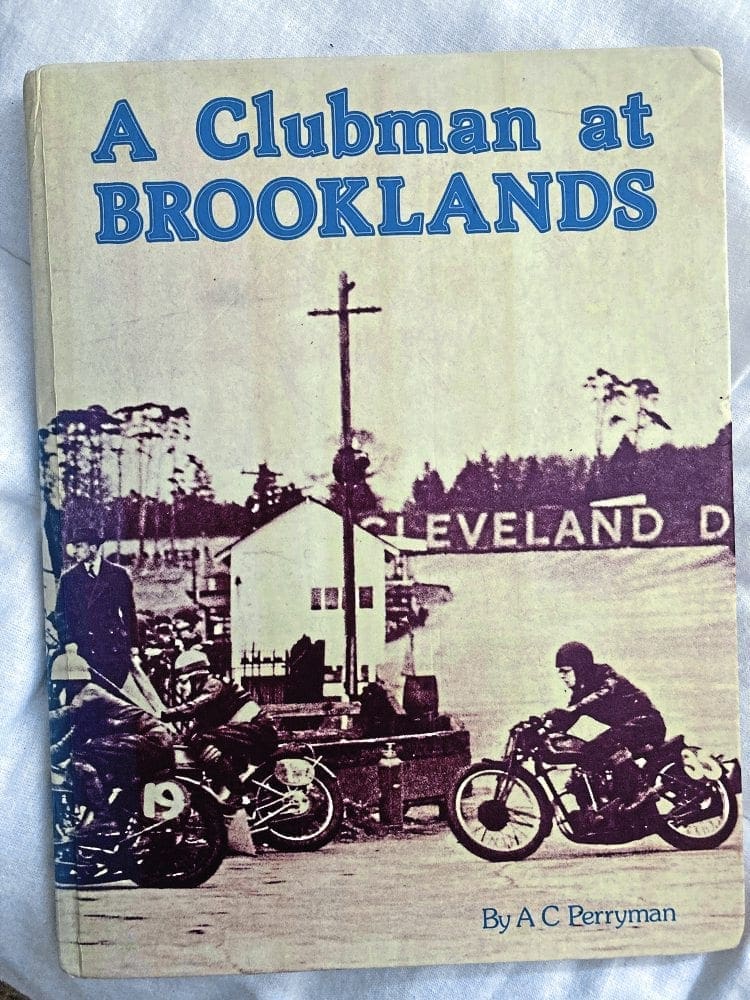Although some of us may be able to start getting out and about for a few rides, there’s no likelihood of big congregations or events anytime soon. To keep you entertained, here’s a bit more suggested reading.
SPEED: The One Genuinely Modern Pleasure
Enjoy more Classic MotorCycle reading in the monthly magazine.
Click here to subscribe & save.
This highly readable hardback has 14 chapters of fascinating, often little-known facts, each dealing with an episode of man’s obsession with going fast in the early days of motorcycle sport.
Each chapter of the Mat Oxley penned book paints a picture of a single personality around whom the story is recounted.
Men like unremittent speed freak T E Lawrence (‘of Arabia’) and BMW’s cool, calculating, multi-Land Speed Record holder Ernst Henne, who took his new wife on honeymoon so they could lie in the grass beside the Paris-Orleans Route Nationale at Arpajon while he observed UK rival Owen Baldwin at close quarters, in becoming the first man to break the 200kph barrier on his Zenith-JAP before tens of thousands of thrill-seeking French spectators who’d paid to enjoy this festival of speed.
Later that year Henne piloted the supercharged BMW R63 to a world record 216.60kph (134.60 mph) in Germany – the first of several new such marks this ‘intelligent, diligent man’ would achieve.

Mat also tells of French Canadian Jake De Rosier, Britain’s Joe Wright, the first to break the 150mph barrier, aristocrat Charles Jarrott (won Britain’s first race for ‘motor-bicycles’ held in 1897), Italy’s Piero Taruffi who, in 1937, become the first to officially break the 170mph barrier aboard the Gilera Rondine streamliner.
Other gems include the revelation John Alfred Prestwich, creator of JAP engines, made the hand-cranked Prestwich 35mm camera was used to record Scott’s mission to the South Pole in 1913.
Or how King Leopold of Belgium’s private army ensured huge wealth for him – and death for an estimated 10 million Congolese – in the years leading up to 1908, by cornering the supply in Belgium’s African colony of the only kind of rubber suitable for making John Boyd Dunlop’s newly-developed pneumatic tyres. And there’s more, much more.
It costs from £25 (UK) and is published by Mat Oxley www.matoxley.bigcartel.com
Alan Cathcart.
A Clubman at
Brooklands
That we’re no longer able to speak first-hand to anyone who raced at Brooklands, means
that books like A C Perryman’s take on an extra significance as our only first-hand account of what it was like to be, well, a clubman at Brooklands.
Bert Perryman – who left school aged 16 in 1928 to start a working career on the railways – started racing at the track in the early 1930s, captivated by the sights and sounds he’d seen as a spectator.
He began racing on a rare four-valve Red Hunter he bought new, while he also rode KTT Velos (and helpfully gives their engine numbers; helpful to a geek like me anyway – they were KTT266 and KTT514, out of interest; ‘266’ was sold by Bonhams in 2012) and an Excelsior Manxman, though it’s on 500cc Ariel Red Hunters he does his best work; at 14½ stone, he was a bit of a big lump for the smaller machines.
One of the favourite things I learned was of the existence of the Bar One Motorcycle Club, which Perryman was invited to join; the only riders not allowed in were those who rode Norton, the ‘one’ of the club name!
Many of us will have heard of the Bar None MCC club (formed by British soldiers in Egypt during the Second World War) and this was more than a likely a nod to the prewar Brooklands club.

In 1939, Perryman took delivery of his last ‘racing’ Ariel, a rather trick, rear sprung Red Hunter that was reported as giving 32bhp (on 50/50 petrol benzole) and on which he rode in the last-ever race meeting at Brooklands, on July 15, 1939.
After that, and with outset of war, the special Ariel was converted back to road-going specification – including a 6:1 compression ratio for Pool petrol – and served as a sidecar hauler during the hostilities.
It’s a good read; printed in 1979, about £25 or so seems enough to secure a second-hand copy via eBay or Amazon.
James Robinson.
If anyone wants to recommend a read please email [email protected] About 300-350 words, please, and a picture of the cover if possible.
Read more Reviews, Letters, Opinion, News and Features at www.classicmotorcyle.co.uk and in the September 2020 issue of The Classic Motorcycle – on sale now!
Advert
 Enjoy more The Classic MotorCycle reading in the monthly magazine. Click here to subscribe.
Enjoy more The Classic MotorCycle reading in the monthly magazine. Click here to subscribe.



